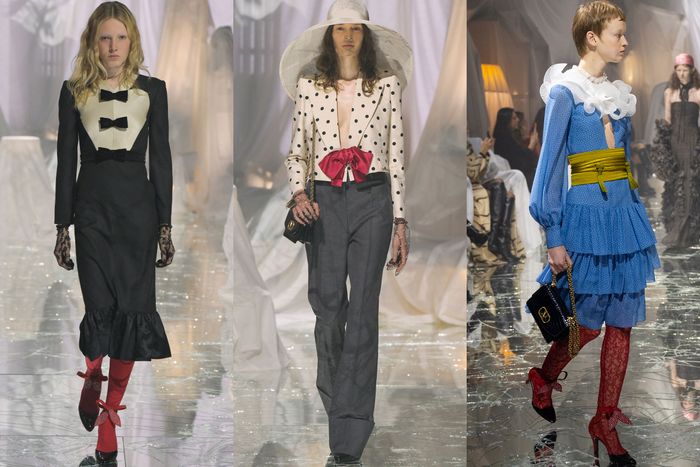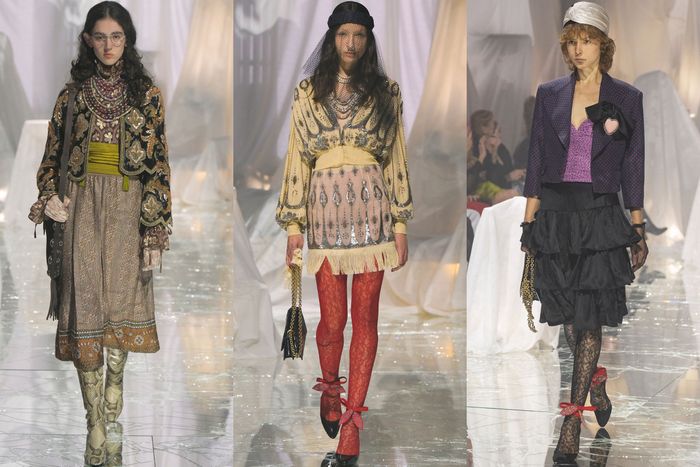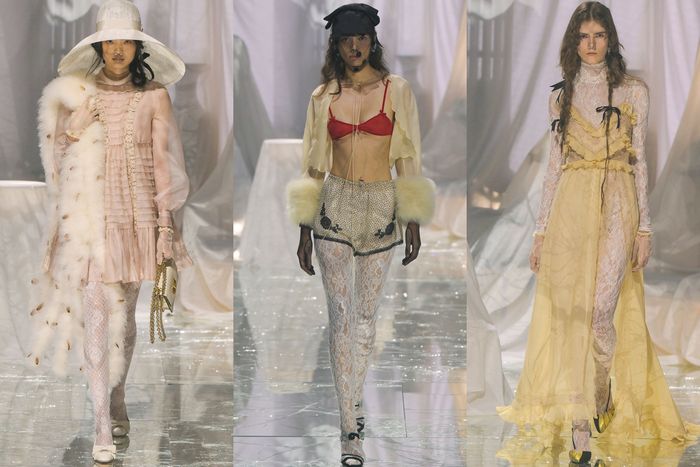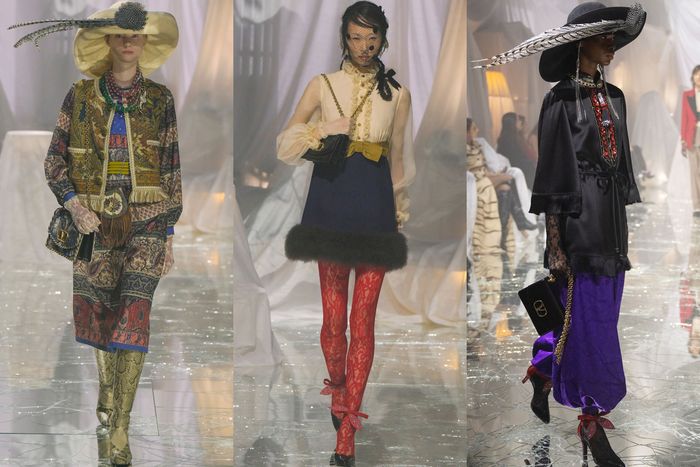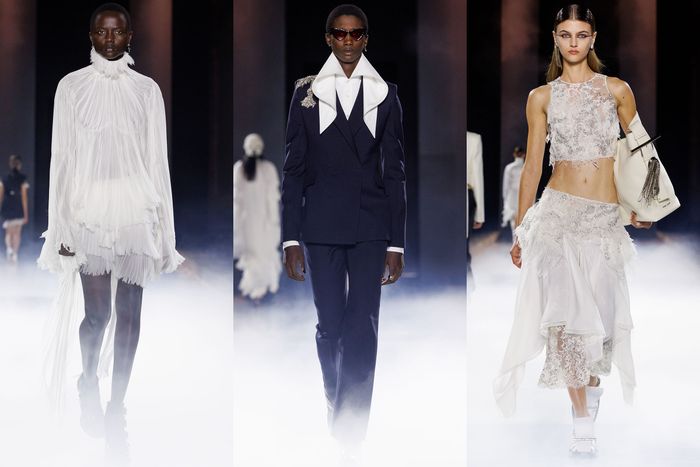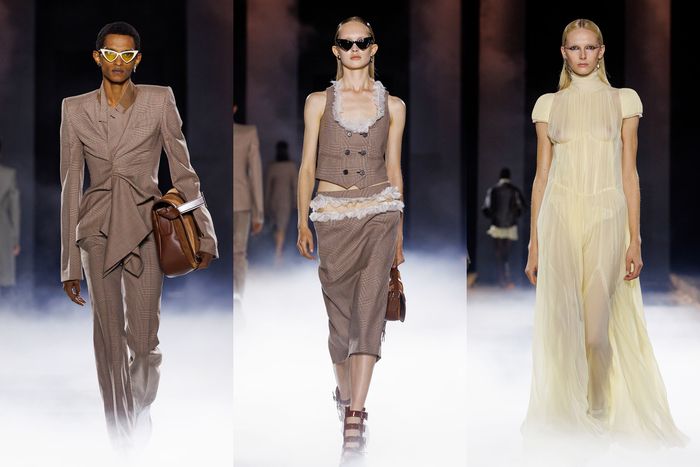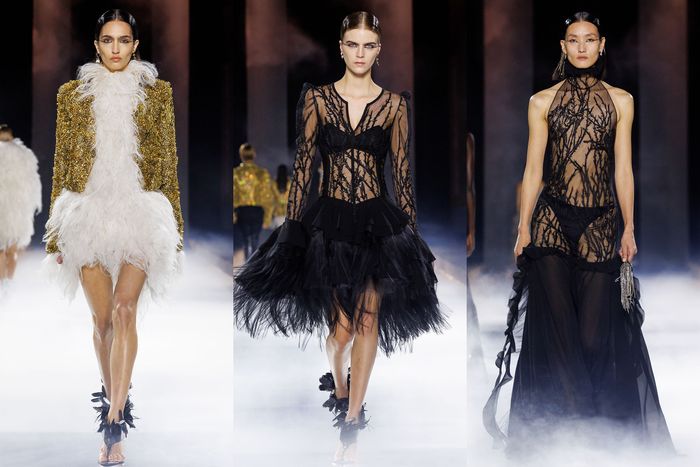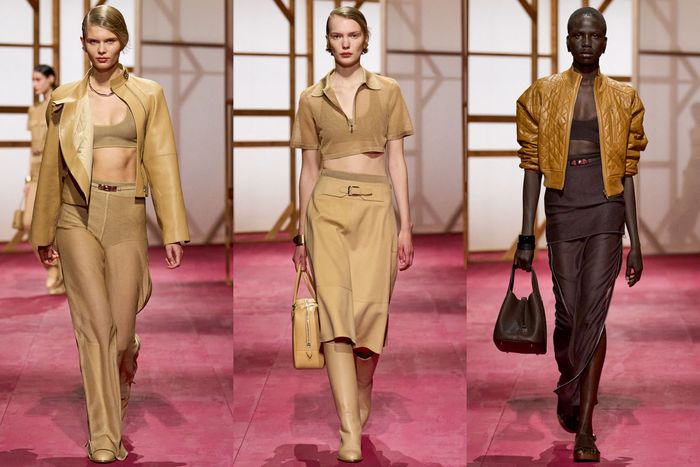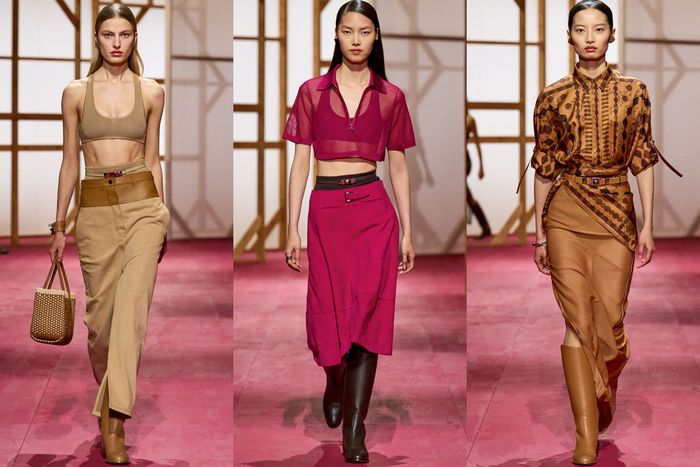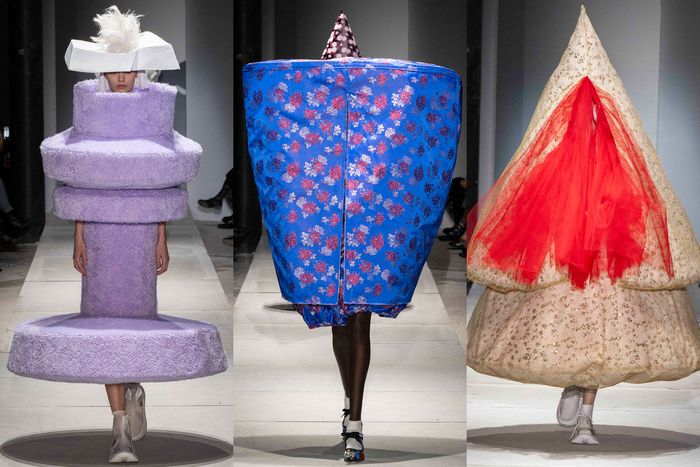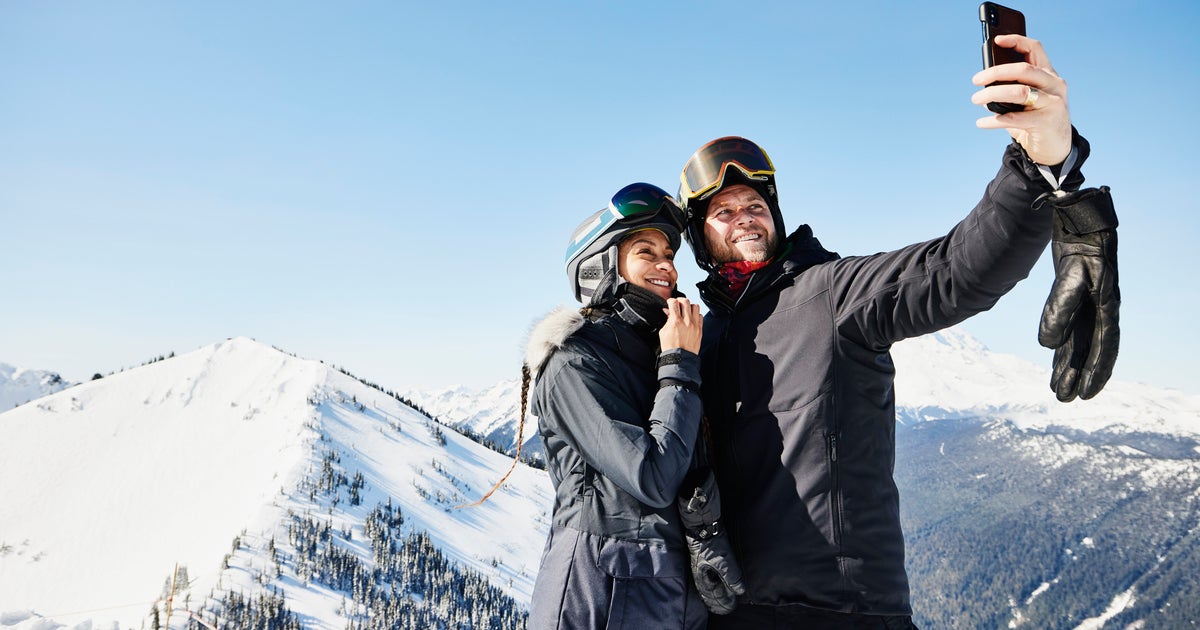Fashion
The Valentino Debut We’ve All Been Waiting for
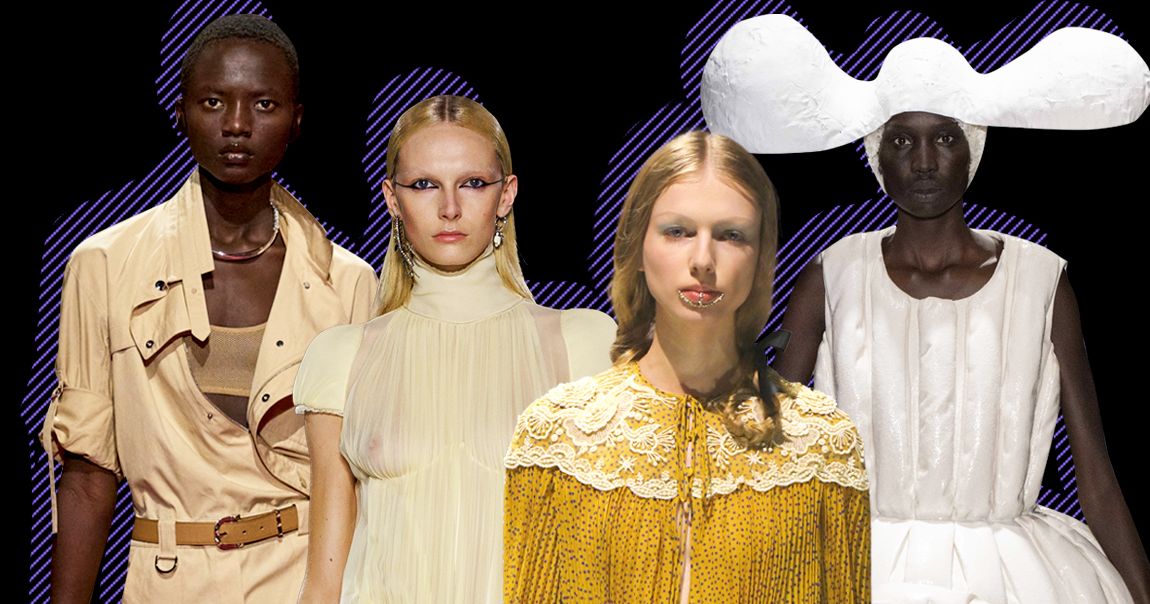
Photo-Illustration: by The Cut; Photos: Courtesy of Hermes, Alexander McQueen, Valentino, Comme des Garçons
Alessandro Michele called his Valentino show “Pavillon des Folies.” Crazy House. The name appeared on a faded brown folder that displayed a Pop Art grid of dots and enclosed an uncredited musical score, as if it had been found in a flea market. As it turns out, 500 folders were individually hand-colored and aged for guests, including Harry Styles and Elton John. The setting was a banal sports arena transformed into a grand home where everything was draped in sheer, backlit dust covers. The floor resembled a shattered mirror. In his rambling show notes, Michele, who loves libraries and old things, quoted Montaigne and Heidegger.
“It’s a real house; it’s his house. It’s not a label, it’s his life,” Michele said beforehand of founder Valentino Garavani, now 92 and at home, presumably in Rome, where the company has been going since 1960 and the extended Valentino family lives in great style. His longtime business partner, Giancarlo Giammetti, attended the show. With antique rings on his fingers, Michele continued, “All these beautiful pieces that he did, he did for many friends. He adored beauty. He was obsessed with beauty.” After seeing the Valentino archive, he felt “you needed ten lives to do all that stuff.”
Valentino
Photo: Courtesy of Valentino
And stuff was generally the impression left by this ornate and respectful debut show. Another day, another debut in fashion. To be sure, many of the 85 outfits were demurely pretty and will possibly fulfill Michele’s belief that young people want to be “crazy chic outside on the streets.” That was his fruitful policy at Gucci, where his maximalist designs and progressive ideas about gender and beauty lifted the sagging brand almost until his departure two years ago. Now, Gucci is struggling to bank on design with a heritage flavor.
Valentino
Photo: Courtesy of Valentino
To an extent, Michele modified his maximalist styling, though he still had some models with face jewelry, nerdy glasses, and ironed or blunt choir-boy hairstyles, not to mention pillbox hats, veils, fur boas, and lace stockings in white or red. Stripped of those effects, a number of the more hippie-deluxe dresses, including one in golden, dusky yellow chiffon with cream lace at the shoulders and waist. There were also boxy, fancy jackets that held promise for a woman who knows how to put herself together individually.
But far too many of the dresses and quintessential, straight-line Valentino suits looked more like costumes, with sad tiers of ruffles, than modern clothes. “Crazy chic” without new proportions or a new attitude. It just looks stuffy. The scenography, with its whiff of Miss Havisham, added to the feeling of dustiness.
Valentino
Photo: Courtesy of Valentino
One may not want to see the stale jet set of Valentino’s early heyday, but the tribe really did know how to live, and that energy — along with light and lightness — is what this collection desperately needed.
Last March at his debut for the London label Alexander McQueen, Sean McGirr was savaged by journalists and online commentators. Though McGirr had only a few months to prepare the work, he intuitively rooted the style in ’90s-era McQueen and his idea of East London characters. That was actually a good starting place, even if some of the tailoring was not done to McQueen’s sharp standards and some other looks were not fully resolved. However, as dubious as horse-hoof shoes with swishing tails looked at the time, they sold out. Sometimes, funny is money. And the shoes jibed with Lee McQueen’s love of nature and animals.
Valentino
Photo: Courtesy of Valentino
Well, on Saturday night, as guests arose from McGirr’s second show — at the Beaux-Arts school, where smoke machines created a misty bog — the reactions were nearly as harsh, though for a different reason. McGirr had given the clothes a professional polish. I heard one or two people say they missed his first collection’s messy charge.
I must say I did too — a little. But this is why young designers with experience should be allowed time to plunge into a house’s history and develop their voice. It’s good for the brand and for fashion, in the long run, if they have time. Very few people today remember how dopey and bourgeois Tom Ford’s first work for Gucci was. Demna’s Balenciaga in 2015–16 was not the Balenciaga it had become by 2020.
McQueen
Photo: Courtesy of Alexander McQueen
This time, McGirr’s only mistake, in my view, was that he pulled things back too far from the gritty singularity of the debut, resulting in a show that looked rather merchandised. The runway is for taking risks, and being out of step in a way that people might not immediately understand.
Sticking with the narrow, S-bend silhouette that McQueen made his own in the mid-’90s, McGirr offered solid tailoring that incorporated a gathered bit in front, as if you were clutching your coat in haste. He also included a new version of the bumsters, now with an added, chiffon-fringed panel at the waist to make them easier to wear but still sexy; shredded chiffon skirts and frayed, high-collared blouses that lent a McQueen rawness; a thorn pattern in a black evening dress that recalled early McQueen (and ideas of an original collaborator, Simon Costin); and tough cotton coats with dandyish Napoleonic collars in scuffed velvet.
McQueen
Photo: Courtesy of Alexander McQueen
“Usually, I would find the dandy really naff,” McGirr, who is Irish, said. “Sockless loafers — ugh.” Then again quite a few of his countrymen were dandies, most famously Oscar Wilde. McGirr also played with the Savile Row and Jermyn Street elements, with summer-weight men’s checks, waistcoats, and fine tuxedo shirts (a trend this season).
McGirr was absolutely right at the beginning to project characters, and I missed that in his second model casting. I also found the styling a bit too antiseptic for McQueen. McGirr, who looked at images of Wolfgang Tillmans for some of his inspiration, told me, “A lot of people come to McQueen for Saturday night, something to look cool in.”
McQueen
Photo: Courtesy of Alexander McQueen
To that point, though, he might have included some simple but hot-looking tops with pants. That was an essential McQueen style in the ’90s, and much needed today. We have far too much dressy fashion on the runways. To quote McGirr, “Ugh.” He might also go further with the raw, fucked-up quality. Above all, he should trust his intuition. He wasn’t wrong in March, just not fully in control. As he said, correctly, “You can’t rush McQueen.”
Nakedness is practically a given in fashion. Nadege Vanhee showed again why she’s one of the best women’s designers around, both subtle and insightful, in her choice of high-quality mesh knitwear to bring transparency to Hermès. Her mesh trousers, over matching underpants, allowed just enough light through, and thanks to side zips, they could also be opened for the illusion of a skirt.
Hermes
Photo: FILIPPO FIOR/Courtesy of Hermes
Apart from a small dose of rose-pink for denim separates (that barely looked like denim even at close range), her colors were riding-boot shades of brown. Her scenography, along with some of the small details of the clothing — a black mini apron dress and a tab on a cotton jumpsuit in which to hook your glasses — was based on an artisan’s workshop. A fantastic scarf print, in shades of brown that evoked in abstract blocks the fountain at Versailles, captured that sense. The artisan who made the original drawing wanted to entwine traditional block- and screen-printing methods and based the pattern partly on the tiny leather pieces Hermès uses to reinforce handles on bags.
Hermes
Photo: FILIPPO FIOR/Courtesy of Hermes
“I was attracted by the oddity of it,” Vanhee said of the drawing. She made the most of it in a season in which silk prints are scarce.
Another inspiration was images of the artist Helen Frankenthaler as a young woman at Bennington College in Vermont. Frankenthaler was a source, perhaps, of the sporty camp shirts with rolled-up sleeves, the terse A-line skirts, and the nonchalant sheerness.
Comme des Garçons was brilliant — odd but brilliant. Rei Kawakubo called her collection “uncertain future,” reflecting the world and perhaps her private feelings about creativity. I found myself utterly charmed by her assemblages of wadded and draped fabric — some made rigid by a coating of resin and others resembling colorful personal housing with a model peeping out a slit — not unlike Scout in her school-play ham in To Kill a Mockingbird. Surely a characteristic of our time is isolation, stark or beautiful. The headpieces, made from Styrofoam and layers of paint, are the work of Takuto Kadokura.
Comme des Garcons
Photo: Courtesy of Comme des Garcons

